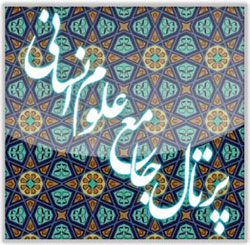The Foundations of Nizam al-Mulk’s Politics: The Link Between Reason and Faith
Keywords:
Nizam al-Mulk , Moderation , Rationalism , Political Tolerance , Rejection of FanaticismAbstract
The Seljuk era holds special significance in the historical destiny of the Iranian nation. This Turkic-origin dynasty, after a period of fragmentation, managed to reestablish the territorial unity of the Iranian empire, which had long been disrupted. Remarkably, the Seljuks were quickly assimilated into Iranian civilization. Undoubtedly, the rapid formation of a centralized Seljuk government can be attributed to the fact that, by that time, Iran had retained its linguistic and ethnic identity. The Iranian society in the 11th century CE (5th century AH) was deeply chaotic, insecure, and unstable. This society was afflicted both by the anarchy caused by the aggression of the nomadic, non-Muslim Ghuzz tribes and by the radicalism of religious ideologues, inflamed by the extremist tendencies of the Batiniyya and Hanafi schools. Through his wisdom and astute statesmanship, Nizam al-Mulk managed to elevate the Seljuk state to a level of considerable grandeur. Khwaja Nizam al-Mulk was a distinguished vizier and statesman who left behind a remarkable legacy in both scholarly and administrative domains. During his thirty years of service as vizier, he laid the foundation of a stable society. His strategy of moderation played a pivotal role in the success of the Seljuk government, fostering peace and security within society. This article, based on a discourse-analysis approach aligned with Michel Foucault’s definition—which conceptualizes discourse as a vast network of events, actions, statements, and writings that shape historical reality—aims to explain and analyze the topic. The central research question is: What are the indicators and characteristics of Nizam al-Mulk’s strategy of moderation? The objective is to elaborate and clarify key components such as realism, rationalism, tolerance, moderation, and avoidance of extremism, which together form the core of his moderate political strategy.
References
Abu Zayd, N. H. (2015). Text, Power, Truth. Niloufar.
Ahi, H. (1978). Bahour-e Shear-e Farsi (Metres of Persian Poetry). Khazar.
Al-Jabri, M. (2014). The Formation of the Arab Mind. Sales.
Arkoun, M. (2013). The Historicity of Islamic Thought. Negah-e Moaser.
Babcock, P. (1981). Webster New international Dictienary. Gove press.
El-Awa, M. S. (2003). Islamism or Islam. Ghasidehsara.
Eqbal, A. (2016). Vizierate in the Era of the Great Seljuk Sultans. University of Tehran.
Eslami Nadoushan, M. A. (2015). Bargrizan (Falling Leaves). Mehrad Institute.
Fromm, E. (2018). Christian Dogmatism. Morvarid.
Frye, R. N. (2013). The Golden Age of Iranian Culture. Soroush.
Grousset, R. (1996). Iran and its historical role. Siyasi va Eghtesadi (Political and Economic Information)(111-112), 12-25.
Grousset, R. (2008). The Empire of the Steppes. Elmi va Farhangi.
Lambton, A. (1980). The Theory of the State in Iran. Azad.
Lambton, A. (2010). State and Government in Islam. Shafiei.
Lewis, B. (2008). The Cambridge History of Islam (Vol. 2). Mahtab.
Mohit Tabatabai, M. (1988). The Evolution of Government in Iran after Islam. Be'sat.
Safari Agh Ghaleh, A. (2008). The last will and testament of Khajeh Nizam al-Mulk Tusi. Gozaresh-e Miras, 20(3, 27-28), 22-26.
Scott Meisami, J. (2018). Persian Historiography. Mahi.
Servat, M. (1988). Kheradnameh (Book of Wisdom). Amirkabir.
Tavakoli Targhi, M. (2016). Indigenized Modernity and Historical Rethinking. Pardis.
Tusi, N. a.-M. (2018). Siasatnameh (The Book of Government). Amirkabir.
Verdonk, P. (2010). Fundamentals of Stylistics. Ney.
Zarrinkoub, A. H. (1985). Escape from School. Amirkabir.
Zarrinkoub, A. H. (1988a). The Book of Days. Moein & Elmi.
Zarrinkoub, A. H. (1988b). History of the Iranian People. Amirkabir.
Zarrinkoub, A. H. (2013). Roozegaran: History of Iran from the Beginning to the Fall of the Pahlavi State. Sokhan.
Downloads
Published
Submitted
Revised
Accepted
Issue
Section
License
Copyright (c) 2025 یاسر عسکری (نویسنده); علی اکبر امینی (نویسنده مسئول); حسین شریعتی (نویسنده)

This work is licensed under a Creative Commons Attribution-NonCommercial 4.0 International License.








